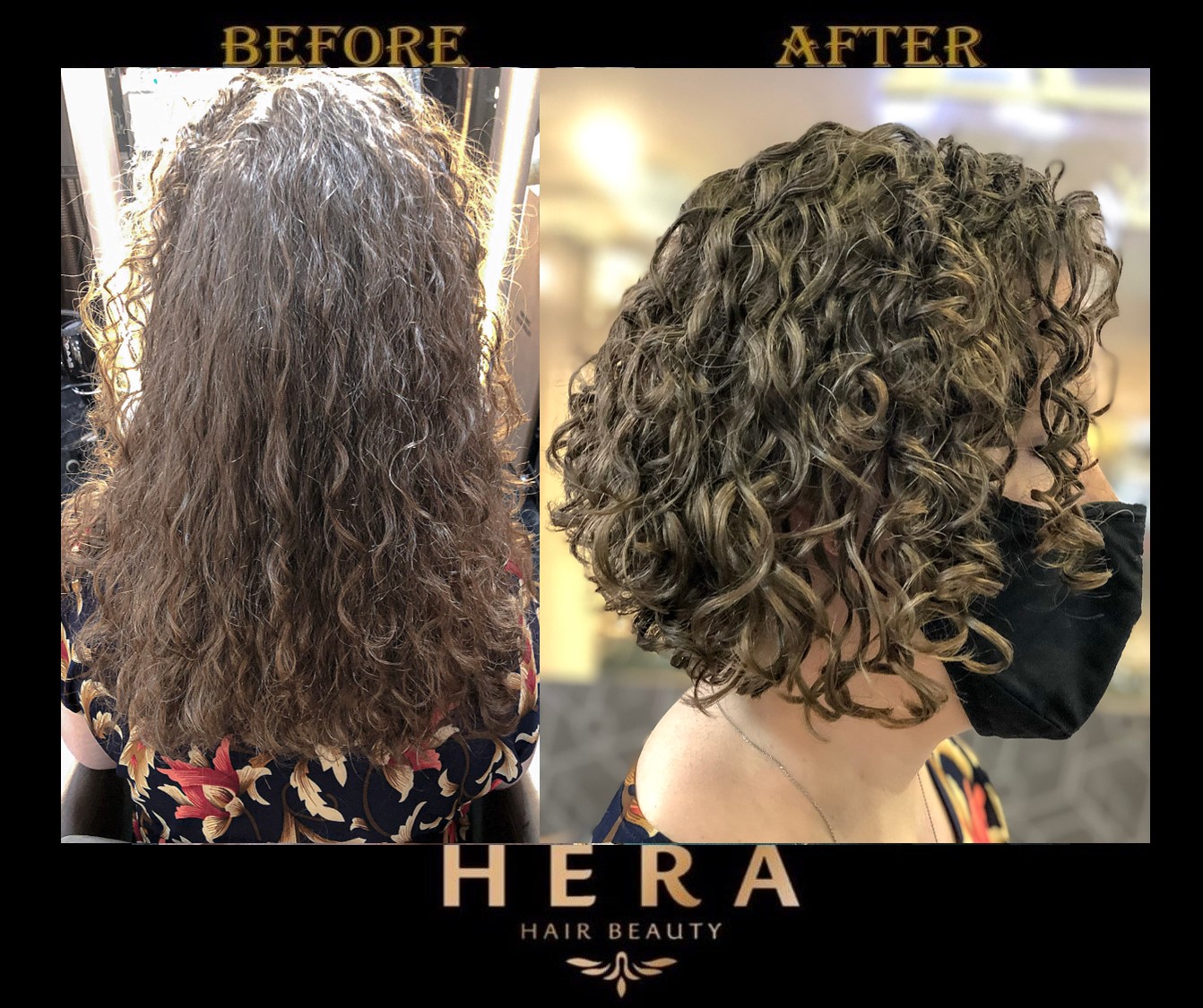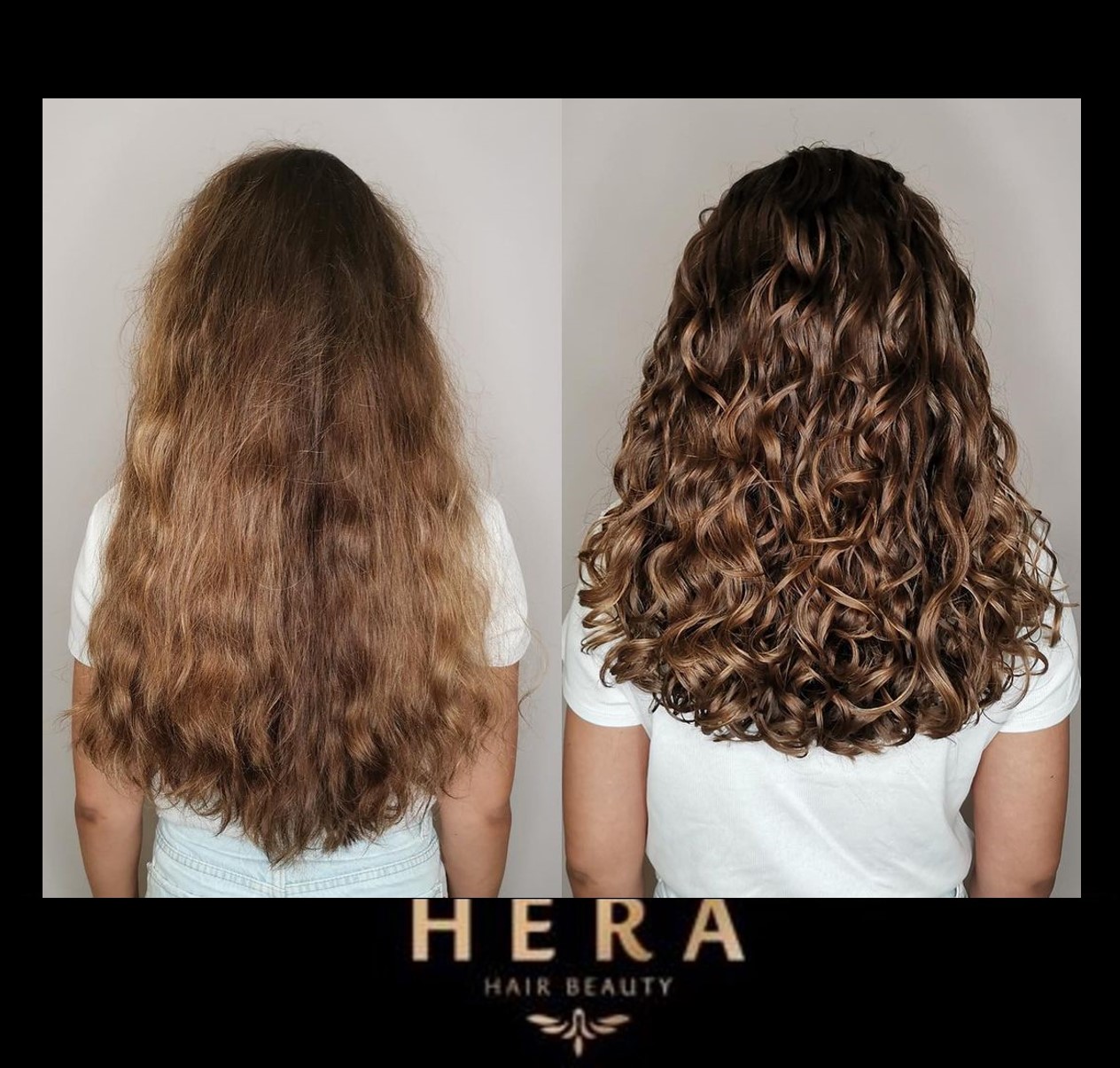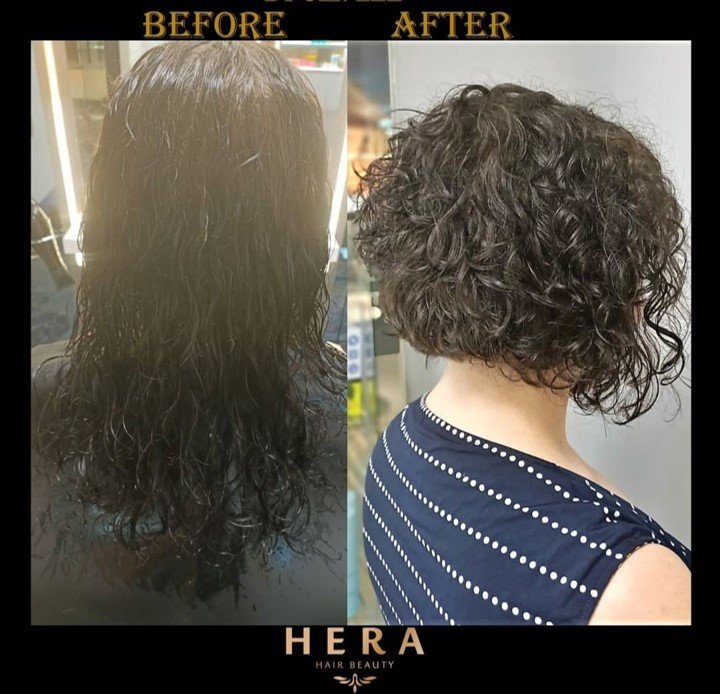Curly hair can be a bit complicated. With such a lot of volume, liveliness and bounce, it’s certain to have a unique set of hairstyling rules and guidelines. Curly hair can seem like a new language which you need to master, understand and adhere to. The rules do not only apply to the styling of curly hair as the curls also have their own unique requirements when it comes to cutting and sleeping too.
The method that curly hair is cut can affect their bounciness, health and even its definition. They are among the most important aspects and that’s the reason this article is important to explain all you should learn about how curly hair is cut.

1. How Frequent Should You Get Your Curly Hair Cut?
Curly hair must be frequently trimmed. In fact, it is more frequently trimmed than other types of hair.
The gorgeous twists and bends of curly hair makes it more prone to split ends and curls breakage. The breakage of the curl’s outer layer lets moisture escape, which makes it more vulnerable to dehydration and dryness. Curls that are dry and dehydrated are more likely to be brittle, break off and frail. Since curly hair can be susceptible to dryness and hence if we trim it often, it can prevent split ends in the bottom from encroaching on the hair shaft, drying out your remaining other hair.
If your curls are starting to get tangled and knot easily, it’s another indication that you’re in need of a trim. The best guideline for the needs to trim the curly is at least every six to eight weeks. Making recurring and pre-booking appointments at the salon is an excellent way to ensure you have fresh trimming at regular intervals. If you’ve trimmed your curls yourself (bravo! We salute to you!), it is also possible to schedule reminders on your smartphone for every couple of weeks.

2. Should Hair Be Dry or Wet While It’s Being Trimmed?
It depends on personal preference, but in general, curls should be trimmed when it is dry.
Every curl has its own unique pattern, and a single head of hair could be able to have many different patterns of curls. When hair is dry it’s easier and simpler to section the curls into different curl patterns and then treat each one in a different way. Curly hair shouldn’t be cut uniformly and evenly like straight hair is. Each curl pattern should be cut uniquely based on their individual curl type and pattern.
Thus, once the hair is dry, it is also easier and more accurate to determine the spring factor of the curls (the elasticity of each curl that it will spring back to shape after being removed). Type 2 curls have a lower elasticity and spring factor and possibly even just about 1/2 inch. At the other end of scale, Type 4 curls feature a higher spring factor and elasticity, which means that such curls can easily bounce back between 6 to 10 inches based on the length. If the hair is in wet condition, it must be pulled down in order to be cut. Hence this will make it difficult to gauge the degree of elasticity based on the length that it’ll bounce back after the curls are dry. Hence this may lead to tragedy that could the curls being cut too much.
The appearance difference is more noticeable and significant on curly hair than for other types of hair when hair is dry as compared to wet. Our hair is dry most of the time and ot wet. It is important to see the style in which they are in state of rest for a good judgement and visualization of the final actual appearance.
Density is another important aspect of curly hair. Wet hair tends to be clumpy and lumped together and can be difficult to gauge the curl thickness. This can play a very major and important part in determining the quantity of hair that could be thinned down potentially. Curly-haired ladies know that density essentially refers to “puff factor.” Curls may be required to be taken down a notch and tamed at times, but it would be devastating to lose excessive density as well as the valuable body and volume.
Our past articles have been focusing on the message that curly hair is unique and cutting it dry rather than wet is just one more of its distinctive requirements.

3. Heading to a Salon?
Do you frequent the salon for a haircut? If so, do you go to the same regular stylist every time?
You don’t need to be a close friend to the hair stylist you frequent, however it’ll benefit you to go to the same stylist for your haircut for every salon appointment. If you see the same stylist every time, they’ll be able to remember and know your curls and understand their unique curl patterns and characteristics. There are a lot of hair stylists who “specialize in curly hair,” however, no two individuals have the same curl patterns. The way these curly hair specialists treat another person’s curly hair might not be the ideal method to treat your curly hair.
It’s not about being “high-maintenance,” it’s about being intelligent and smart. You as well as your hairstylist will both save alot of precious time, and you’ll receive the best curly haircut, which is crafted specifically to meet your specific curl patterns, types, needs and preferences. Don’t be afraid to seek out the right curly hair specialist who can understand your curl patterns and types as well as what you’re searching for in your ultimate curly hair goals and style.

4. Trimming Your Own Curly Hair?
Perhaps you’ve usually cut off your own curly hair , or maybe it was a COVID quarantine that others have inspired you or you are compelled to explore your inner self as a hairstylist. Whatever the reason, we applaud you for taking the challenge to cut your curly hair as this is certainly not a straightforward and easy job.
When you’re cutting off your own curly hair, here are some important guidelines to remember to make sure you’re cutting your curls effectively and safely.
It is important to ensure that you’re using the correct and suitable tools. Particularly if you have been regularly doing your own curly haircut, it is crucial to invest in a quality set of hairdressing scissors and no doubt that it will be worthy of the investment. The scissors that you use in your office or kitchen will not be able to cut your hair or curls. It is also very important to ensure that you have an area where you can cut your hair which is well lit and is located near to a mirror. A plain and simple background can help you visualize the silhouette and shape of your curly hair as well as the way it frames your face once the haircut is completed.
We’ve discussed earlier on how curly hair should be cut – whether it is dry or wet. The trimming of hair after the second or third days following a wash is the ideal case since by that time the hair has settled into its natural condition. If you’ve just styled your curly hair recently using any kind of heat, you should try to wait for a few more days until your hair is in its natural state again in order to observe how the curl patterns and curl shape will be when they are in their natural condition.
Before you pick up the scissors, try to give your curls a good agitated shake as this will let your hair settle into its natural position and state. This is the way your curly hair will naturally appear most of the time, which is why it’s sensible and important to begin by starting with this natural curl’s condition and shape. If your hair is longer than your shoulders, it’s best for you to pull it to the front so that you are able to view its entire length.
It’s time to trim! When you grasp the different sections of curls to start cutting, stretch them outwards as if they are reaching for different timing in an imaginary clock. (If you are commencing the haircut on the crown of the head, stretch the section upwards until you reach the 12 o’clock imaginary position). Position the hair between your middle and index fingers and start cutting off the hair ends. This clock technique will ensure that each section of hair is cut evenly.
Keep in mind that you are able to return to the sections and snip more, but you’re unable to reverse the situation if you begin by cutting excessively. Hence, from hairdressing’s perspective, it’s better to be conservative than sorry and make sure to take your time and be careful by not overly sniping. As you are making cuts “around the clock,” give your curly hair a shake every now and then in order to check how curls turn out to be. Like all things in life, practice is the key to perfection. Although it is stressful, but cutting your hair can also be enjoyable as it puts you to be the one to decide the final result. If you have tried to cut your hair yourself and aren’t happy with the outcome, this isn’t necessarily the end of the world.

5. Are You Using the Right Products?
You must tailor every aspect of your hair care routine to your curls of unique patterns and types. Curly hair isn’t the same as other hair. It is truly very special and must be treated as such.
Utilizing hair products specifically crafted and manufactured for curly hair will not only help in your curls maintenance routine, but it will also help in the curls cutting process too. The right hydrating conditioner and nourishing shampoo can prevent the split-ends from stretching up the hair shaft, meaning you won’t have to worry about cutting the curls too often.

6. Trim Your Curly Hair the Correct Way
There’s a proper method of doing it. The best curly hair maintenance routine begins with a customized hair care regimen which covers everything right down to how the hair is cut.
This is all you should know and understand about the art of cutting curly hair. Long live the curls!
BOOK YOUR CURLY HAIRCUT APPOINTMENT WITH US NOW!
Look no further, visit our Hera Hair Beauty salons and have a consultation with one of our talented curly hair specialists.
To book your appointment click here
or call to book at +6592371254


Leave A Comment